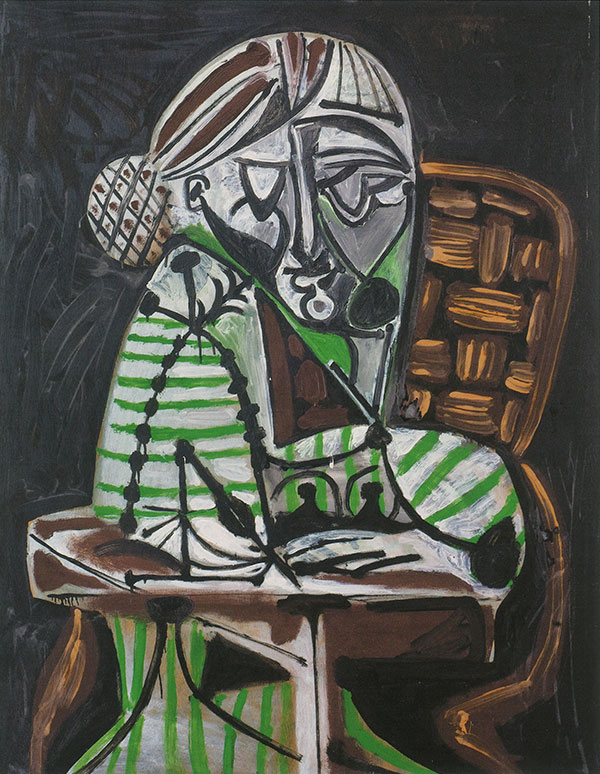Françoise Gilot (1921-2023)
Picasso's partner and companion for ten years, from 1943 to 1953, Françoise Gilot passed away on June 6th at the age of 101. An extraordinary age for an exceptional woman.
A painter in Paris during the Occupation, she met Picasso through the actor Alain Cuny. Rebelling against her family —particularly her father, who did not appreciate her hopes of becoming an artist— she was cut off from their financial support. But nothing would stop the talented, sunny young artist: she taught classes, followed her art training, begun in 1934 and then continued at Endre Rozsda's atelier, and made frequent visits to Picasso's studio. A few months into their relationship, Gilot began to share the artist's life and his studio, as she described years later in her book Life with Picasso, published in the United States by McGraw-Hill in 1964 and later by Calmann-Lévy in France in 1965.
During the difficult postwar times, in a depleted country after the Occupation, they enjoyed a happy period, settling first in Antibes and then in Vallauris, at La Galloise. The couple had two children: Claude, born in 1947, and Paloma, two years later. Françoise Gilot, who felt close to the Réalités Nouvelles group, pursued a promising career in art; meanwhile, her relationship with Picasso deteriorated. In September 1953, Gilot, an independent and strong-willed woman who demanded freedom of thought and the right to pursue her own artistic path, left Picasso and moved to Paris with her two children. Picasso was deeply resentful, having told her, according to his partner's account, that "nobody could leave a man like him."
Françoise Gilot returned to painting, adopting a minimalist approach in contrast to Picasso's style, and then, from 1951 onwards, "adding more and more color," as she explained when recalling her memories. She pursued her personal quest: "I don't paint what I look at, but what looks at me." Gilot moved to the United States in the early 1970s, traveled extensively, and wrote. In 1975, she published Le Regard et son masque (Calmann-Lévy, again), in which she discussed her conception of the painter and of painting. She is also the author of Matisse and Picasso: A Friendship in Art, published in English by Doubleday in 1990 and in French by Robert Laffont in 1991.
Françoise Gilot, a rebel and a feminist ahead of her time, gained recognition at the end of her life, as much for her commitment as a woman as for her quest for freedom. A well-deserved tribute to this major artist, whose advice in life was to "just be yourself."





 Summary
Summary